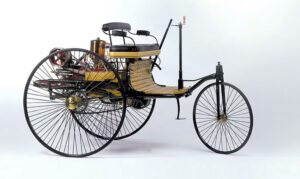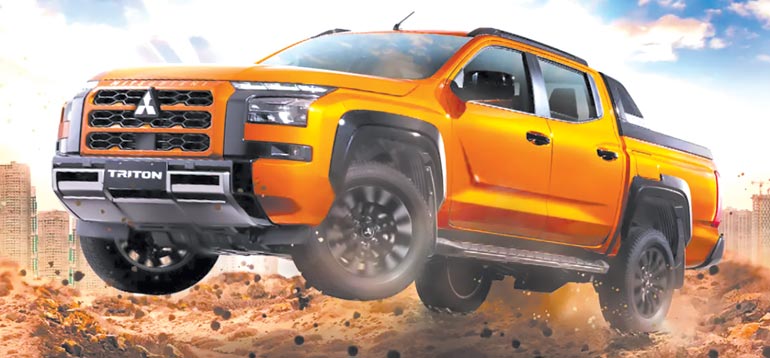A journey of ingenuity in automobiles
From the early days of open-roofed motorized transportation to the technologically advanced self-driving sustainable vehicles of today, the evolution of comfort and design in modern cars has been a captivating journey inspired by innovation and creativity. Widely considered as the world’s first automobile, Carl F. Benz’s model no. 1 of the Benz Patent Motor Car […]

From the early days of open-roofed motorized transportation to the technologically advanced self-driving sustainable vehicles of today, the evolution of comfort and design in modern cars has been a captivating journey inspired by innovation and creativity.
Widely considered as the world’s first automobile, Carl F. Benz’s model no. 1 of the Benz Patent Motor Car ran for the first time on New Year’s Eve 1879. The three-wheeled two-seater vehicle ran through a stationary gas engine and was kept together by a tubular steel frame that exposed its passengers to their environment.
In these early days of automotive history, cars were basic machines designed to transport with little to no regard for passenger comfort. Bumpy rides, noisy cabins, and minimal amenities were to be expected on any long trips. However, as automobiles became more accessible and affordable to the public, manufacturers began to prioritize comfort alongside performance and aesthetics.
In an effort to make vehicles more stable in rough terrains, Alanson P. Brush launched the “People’s Car” in 1906. The Brush Runabout was the first automobile to feature a coil-spring suspension system and built-in shock absorbers. The people’s car was also one of the first to substitute a steering wheel for a tiller bar. The blend of spring coils and shock absorbers can still be found in today’s automobiles.
Another benchmark for comfort in automobiles occurred in 1910 when Henry M. Leland’s Cadillac pioneered a passenger car with a fully enclosed cabin. The Cadillac Model 30 Roadster revolutionized passenger comfort by providing protection from the elements and creating a smoother driving experience.
The introduction of these features marked a significant leap forward in driving comfort. These innovations not only cushioned passengers from road imperfections but also provided a more pleasant and refined driving experience. As cars continued to evolve, so did the features aimed at enhancing passenger comfort, design, and safety.
In 1909, Henry Ford started fitting laminated glass to vehicles as he acknowledged the hazards of the environment and the necessity for enhanced security. The practice of installing glass panels in cars eventually became the norm for all Ford models and subsequently, other automotive manufacturers followed suit.
Meanwhile, head restraints, or the adjustable headrests found in modern cars, were first patented in 1921 by Benjamin Katz and were first released commercially by manufacturing company Volvo in 1968. These restraints reduce the severity of whiplash felt by drivers during collisions, provide an emergency device to break a window in case of emergencies, and offer overall comfort to passengers.
Another modern-day safety feature necessary in car designs is the seat belts. These safety straps were first patented by Edward J. Claghorn in 1855. The three-point seat belt, similar to the ones we use today, was invented by Swedish inventor Nils Bohlin for Volvo.
Car design and comfort were further improved with the introduction of car cooling mechanisms. While it isn’t the air-conditioning system that is present in today’s automobiles, the Thermador Car Cooler was the first feature to lower car cabin temperature by cooling the air blown through the open car passenger window.
These amenities that most car owners take for granted are considered basic features when they were luxuries back in the day. Today’s cars are more meticulously designed to accommodate a wide range of body types and preferences, ensuring that drivers and passengers are comfortable on their journeys. In recent years, the integration of cutting-edge technology has revolutionized convenience and design in modern cars.
Gaining popularity over the years are audio systems installed in automobiles. Whether it’s listening to the radio, playing music through the auxiliary port, or connecting to music-streaming services with Bluetooth, the audio system has been a staple to car owners and passengers due to its entertainment value.
Display systems in newer automobiles are also becoming more essential due to their added convenience and functionality. Serving as centralized hubs for accessing navigation, entertainment, communication, and vehicle settings with ease and efficiency while displaying real-time videos of rear and front-end cameras, these display systems are providing drivers with unprecedented levels of convenience, safety, and connectivity.
These modern-day amenities, along with basic features found in automobiles, highlight the history of innovation and creativity in the industry and demonstrate how advancements in technology and design have shaped the driving experience over time. These evolutions and innovations culminate in the latest releases of some of the top car manufacturing brands in the world.
Recently, automobile manufacturer Mitsubishi Motors Philippines Corp. (MMPC) officially launched their All-New Triton pickup model. Named after the Greek god of the sea, the Triton is crafted to endure challenging weather and road conditions and promises secure and comfortable off-road family expeditions.

The new model’s design features a wider stance, larger cargo bed space, and a longer frame compared to other pickups. It also has cunning headlights and square-shaped grill, completed with Mitsubishi’s iconic Dynamic Shield Design.
The Triton’s exterior is complemented by a reimagined interior improved to provide a more comfortable and spacious cabin with all important amenities within your reach along with enhanced connectivity options through its new 9-inch display audio system.
Furthermore, Mitsubishi’s latest model, along with Mitsubishi’s XForce, was given the iF Design Award 2024 for its design concept of “BEAST MODE”. The Triton’s optimized exterior and design express the toughness and powerfulness expected of a pickup truck, earning it the prestigious IF Design Award and solidifying its status as a benchmark of excellence in the automotive industry.
“We are truly honored to receive one of the most distinguished design awards in the world for the two All-New models we launched this fiscal year,” said Mitsubishi Motors Division General Manager of Design Seiji Watanabe. “This award will become our driving force in introducing the Triton and the XForce to even more customers.”
As we look forward to the future, more and more innovations are going to change the way we perceive automobiles. From autonomous driving capabilities to self-charging possibilities, the future of automotive design promises to be both exciting, transformative, and — most importantly — comfortable. — Jomarc Angelo M. Corpuz













